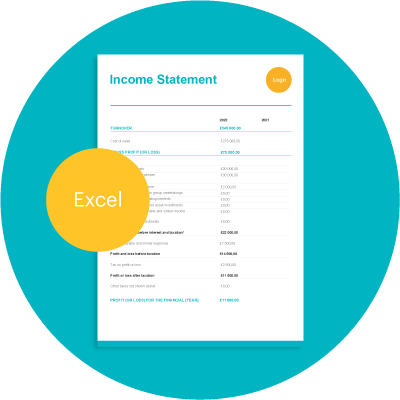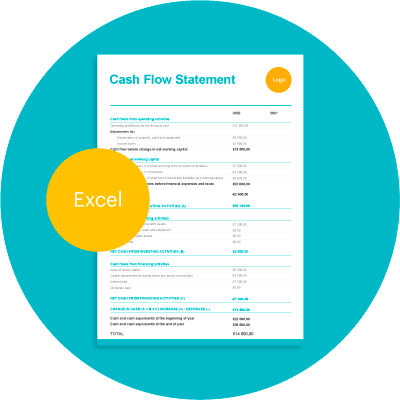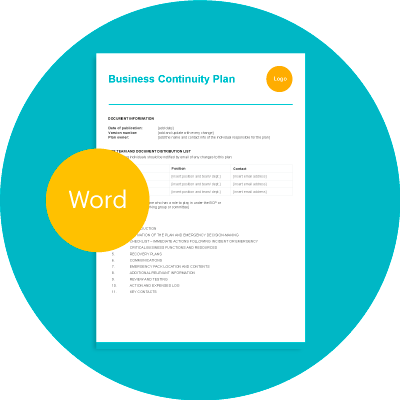
How To Get And Keep Clients | Client retention in 2023
Whether you are a personal trainer, run a cleaning business or are setting up a consulting business, “how to get clients” is the question on every entrepreneur’s mind.
This article aims to answer not only that, but how do you keep them coming back?
Table of Contents
5 simple lessons in how to find the right clients
This article explores each of the following in more depth:
- Branding is important when finding the right customers
- Understand how customers become “brand-loyal”
- Become a self-taught marketing & sales expert
- Plan your work effectively and manage expectations
- A positive customer experience will keep clients coming back
Why branding matters
Strong branding is the difference between customer retention and customer prevention (we’re coining this term). It’s not just having a flashy logo. Branding is substance and style.
Just as branding was an act of (cruelly) asserting ownership over your cattle, branding a business asserts ownership of that business and everything that business will ever do, say and sell.
If you’re a sole trader/self-employed then your business and brand are an extension of yourself and your brand image has a direct impact on your relationships with clients.
(branding is) about owning what your company values and represents, owning up to your shortcomings, and earning customer trust and loyalty through your words, your actions, and your stories – Skyword on “What is branding?”
In other articles we look in-depth at how to create a powerful brand, but to summarize, these are some common traits of truly memorable brands:
- They embody a purpose or a goal
For some companies, this is about being at the cutting-edge of technology, for others it’s about supporting the work of a charity.
Brands with a purpose stay relevant.
Let’s use a personal training business run by an individual as an example. Your company’s purpose could be:
– To push clients to reach the extremes of their ability
– To help them use exercise to tackle mental health issues
– To bring them honest coaching at an affordable price.
Whatever the goal of your business is, it will stir up different feelings to different people and, when a client’s goals line up with that of your business, you’ve found the perfect customer.
- They offer exactly what is described at the price customers expect
The old adage is true – you get what you pay for.
The extended version of that – the perception of value is important when it comes to your brand.
Pricing strategies vary wildly and choosing the correct one for your business is important. When a business doesn’t deliver what’s promised, it wastes the money and time invested in branding.
If you replaced your Kia with a new Mercedes only to find that it didn’t have better build quality or better performance, then you’d be rightly angry. Which brings us to the last point.
- Good brands are consistent – they manage expectations
Consistency is a balancing act between continuity and change. Big changes in your marketing messaging has a big impact on the perception of your brand.
Let’s go back to the personal trainer example – if she constructs her brand under the banner of “improving your mental wellbeing with exercise” then her brand must maintain this core value throughout it’s messaging in some regard.
Switching the messaging to something like “high-octane, adrenaline coaching” is too drastic and she risks alienating her consumer base. Consider the brand consistency before re-positioning your message to target a different audience.
What is brand-loyalty and how do customers become brand-loyal?
The difference between customer loyalty and brand loyalty is explained best by the guys over at retentionscience.com:
“…customer loyalty mainly relates to the overall spending power of consumers. It’s about what you can offer them in terms of regular prices and money-saving offers. Brand loyalty on the other hand, has very little to do with prices or money. Brand loyalty has everything to do with how consumers perceive your brand.”
By this logic, improving customer loyalty means making sure the perception of your brand’s value is always maintained (see point 2 above). This is generally tackled through savings-focused deals – through sales offers, loyalty discounts and membership schemes.
Brand loyalty is easier to maintain once gained – when your brand follows the basic principles laid out above then you’ll gain a group of loyal consumers who don’t feel the need to look elsewhere for a similar offering. Consistency is the key word in establishing brand loyalty.
But without a proper marketing plan, none of the messages you’re trying to establish are going to reach the target audience for your product – so let’s move on to lesson number 3.
How to become a marketing & sales expert
First off – this isn’t a guide on general marketing theory or how to become a marketing expert to rival Seth Godin. This is about becoming an expert in marketing your business.
We don’t expect small business owners to have the time to learn the ins and outs of an entirely new field – but that doesn’t mean you can’t utilize the basic principles of marketing in selling your own services.
Want to know the big secret to good marketing? Communication between you and the people who buy your product.
Find out who they are, what they buy and why they buy it. That’s really all there is to it. When you know what motivates their purchase then you can figure out what message to target them with to make them choose you.
“Word-of-mouth” is underrated – you have a bigger sphere of influence than you think
This is especially true of service providers – plumbers, electricians, personal trainers etc.
- Tell everyone what you do and that you are looking for clients.
- Get your family and friends to spread the word
- Get on social media and tell the world you are now running a business
- Ask your current clients for recommendations and consider a referral scheme
Don’t worry abut getting hundreds of clients through word of mouth. Start with one and make sure that they have a positive experience – word will spread naturally.
Create a strong brand and recommendations will follow. All it takes is for someone to mention to your brand-loyal customer that they’re also in need of a particular service and, being positive about the value of your offering, they’ll think of you first.
When someone gives a recommendation, their own image is on the line. Remember this when developing your customer experience.
“When it comes to finding clients, I’m frequently inundated with questions from new freelancers along the lines of, ’How do I get a dozen clients in my roster?’ My answer: Get one client. Freelancers are so wrapped up in attaining as many clients as possible that they ignore the importance of attaining your first few clients and then scaling from there…”
Rami Sethi, the New York Times bestselling author.
Social media – be your own number 1 follower
You’re going to have to use social media. There’s no getting away from it, so learn to embrace it.
Let’s define something important about advertising on social media – paid advertising and organic advertising are completely different disciplines. We’ll talk about paid advertising in another article, for now let’s look at organic advertising.
Organic advertising requires you to build a following through creating content which people are genuinely interested in.
You don’t pay to show it to an audience, exactly like a personal social media account. The main difference is, your business social media account is designed to attract new customers for your business. How do you do that?
First off, start with listing the channels you think your customers use most and develop a strategy for creating content for each of these channels consistently. Let your brand really shine through in the content you create – you don’t require flashy imagery or professional production in order to gain a large following on social media. Sometimes honest, real human personality is the best approach.
For most businesses, the main channels are:
- YouTube
To a lesser extent, these are also thriving platforms but are pretty business-specific:
- TikTok
- Snapchat
Don’t limit yourself to simply posting on your own page/feed – make friends, connect with people, join groups and contribute to them.
Here are some tips for getting started on social media:
- Checkout Facebook for business
- Hubspot’s cheat sheet for Twitter marketing
- Or this Linkedin’s self-produced guide on Linkedin marketing
Proper planning prevents poor performance
We’re missing a word in this heading but we feel the point gets across.
When a client falls into your funnel, have a plan for conducting your work. Without one, you won’t maintain consistency and your brand image will suffer. Clients come back to brands they trust and with proper planning, trust comes as part of the package. It doesn’t have to be complicated.
Here’s a simple flow for tackling contact between you and a client:
Initial email – follow up email – phone call – contract signing – regular updates – final delivery date – feedback – thank you email and future plans.
Ultimately, your business operating model and business plan will create a foundation for all business processes. Have a look at our ‘how to write a business plan article’, which includes a free template to help you get started.
Work ethic
We’re under no illusions as to the difficulty of getting out of bed to get a job done. Running a business is tough and when we talk about work ethic, we are really talking about managing expectations. Not just your customers expectations about when things will be done, but your own expectations for a work/life balance.
This goes hand in hand with setting your prices properly.
Be honest about how often you’d like to work and factor in time and processes for customer care. A lot of the lessons in client retention are only learned from bad experiences and often, these are due to expectations not being met.
The benefit of making those mistakes is that hindsight is 20/20 and you can adjust your work process to suit you and your client’s needs. Also, unless you’re working in some experimental field, it’s almost guaranteed that someone has been in your shoes before so take the advice of the seasoned veterans.
Andy Swan, an entrepreneur wiring in forbes.com, says of work ethic:
“As an entrepreneur, you have to do more, faster, in order to succeed. Entrepreneurs are at a significant output disadvantage. For every task that you have to complete, your larger competitor has three or four full-time employees working on the same thing.”
Experience your business from the customer’s perspective
From sales outreach to purchasing to after-sales, your customer will experience your business from different angles. It’s important that you’ve thought out and planned this entire cycle.
This may seem obvious, but the best way to retain clients is to:
- Provide the best possible service, no matter how big or small your business.
- Set yourself apart through the quality of your work.
- Remember that quality is more important than speed
Research firm Gallup conducted a survey into speed versus quality and the results may surprise you. Apparently, customers are nine times more likely to engage with a brand when the service is courteous, willing and helpful, compared to ‘speedy service’, which makes them only six times more likely to be satisfied.
Reward loyalty
The clients who have been with you since the start deserve to be rewarded for staying. It’s worth letting them know that, despite you becoming more established, you will not be raising your prices for them. Inspire customer loyalty with membership programs, return offers and after-sales guarantees.
Lower prices for longer contracts is a strategy we employ ourselves. Customers can save on our annual subscriptions over pay-monthly subscriptions. Why? Because it’s tricky to plan for risk and we can better guarantee a quality service if we know someone will be using it tomorrow.
Remember there will always be another company looking to steal customers with cheaper prices and promises, so treat them well and continue to show that you appreciate the history you have together.
Treat each client like they are the most important thing in your world and that they are your number one priority. Given that they put food on your table and a roof over your head, they actually are.
Clients don’t stay for you, they stay because they get the best service and product possible for their money. By providing that, you will be able to build long-term, relationships with customers who will recommend you to everyone they meet.
More Help For Small Business Owners
Automating administrative tasks can help you save time and focus on what really matters – running your business.
On our blog there’s a plethora of articles and templates to help small business owners set up and run their business.
Try out our free employment contract template, this business plan template or our zero-hour contract template. There’s also a ton of guides and “how-to” articles to help you get started, do your taxes or source better clients.


